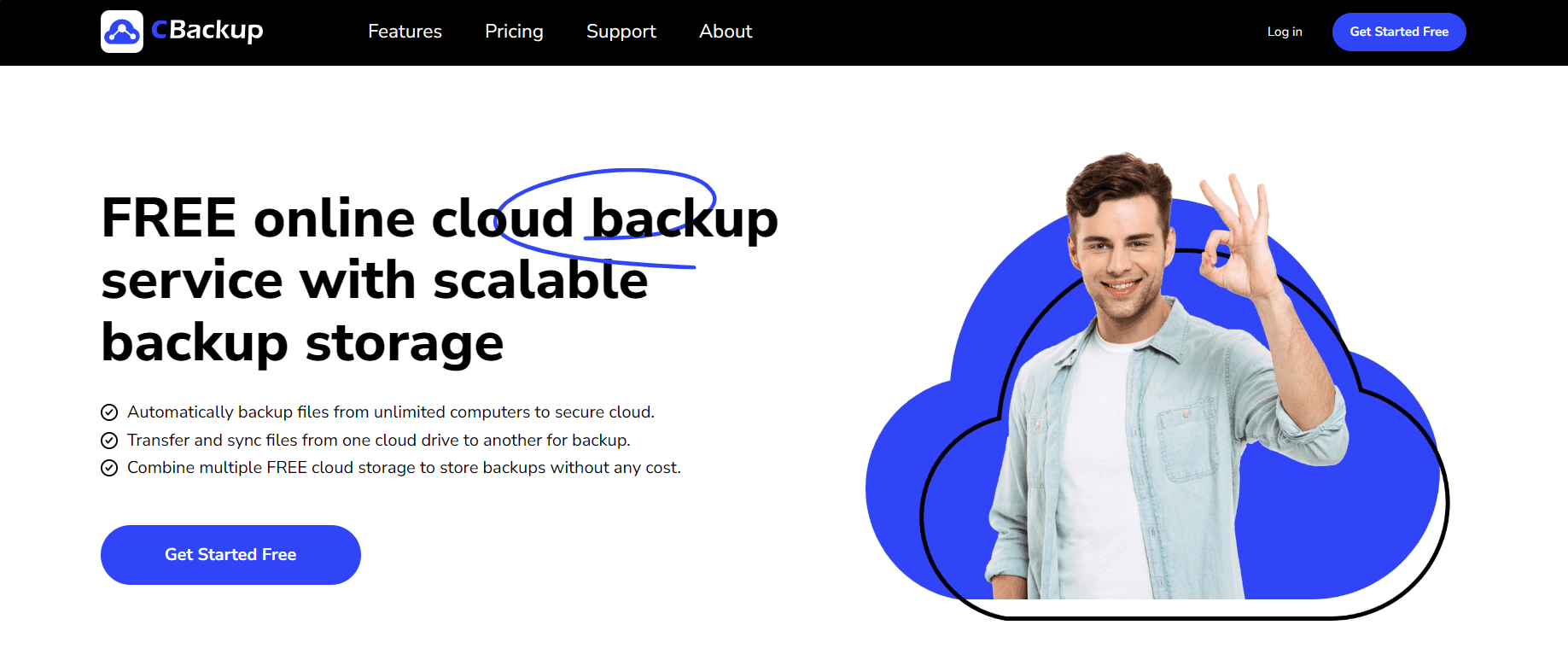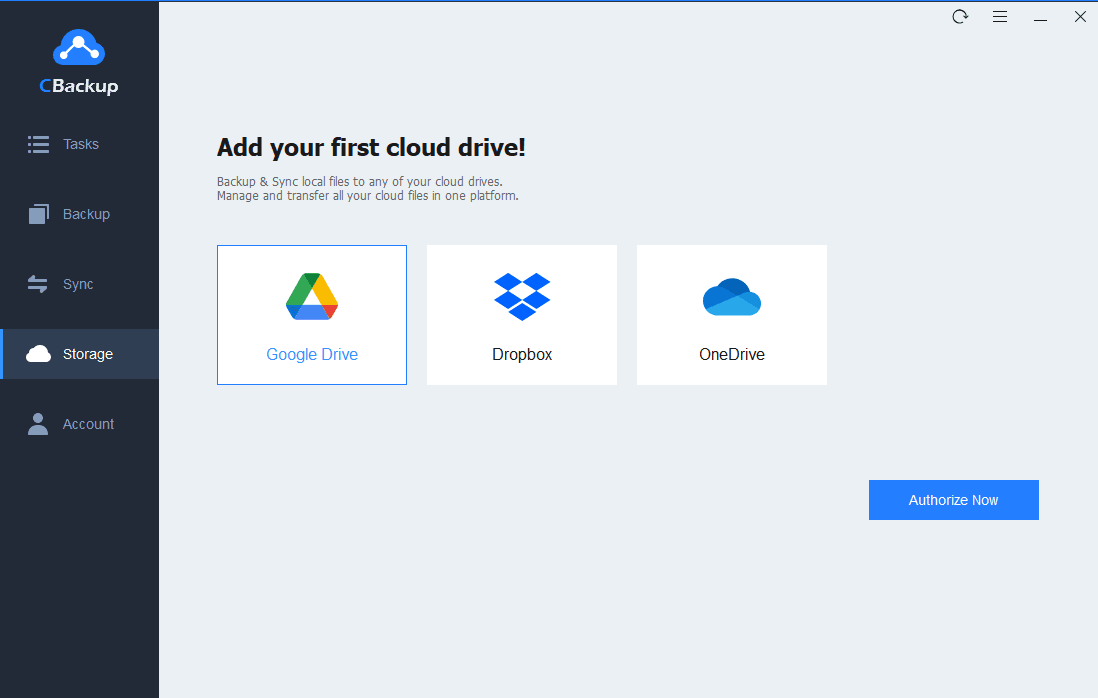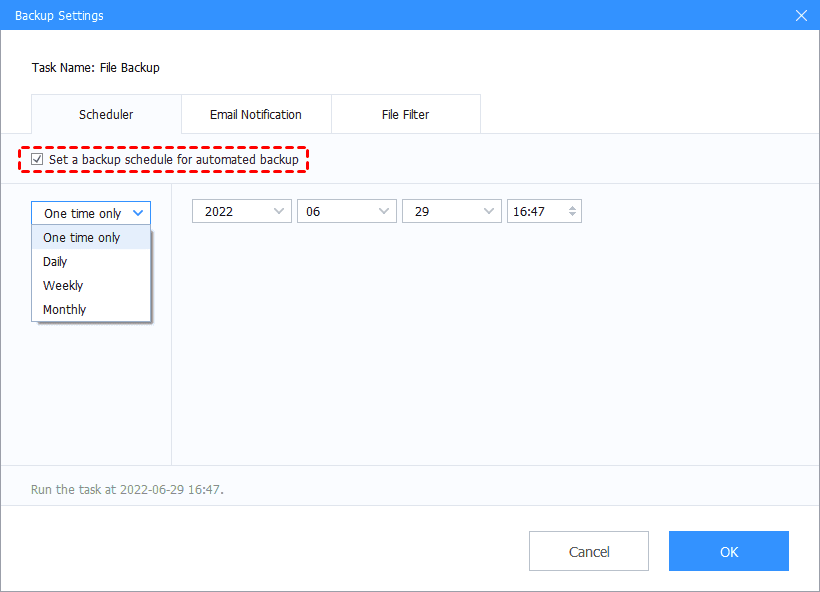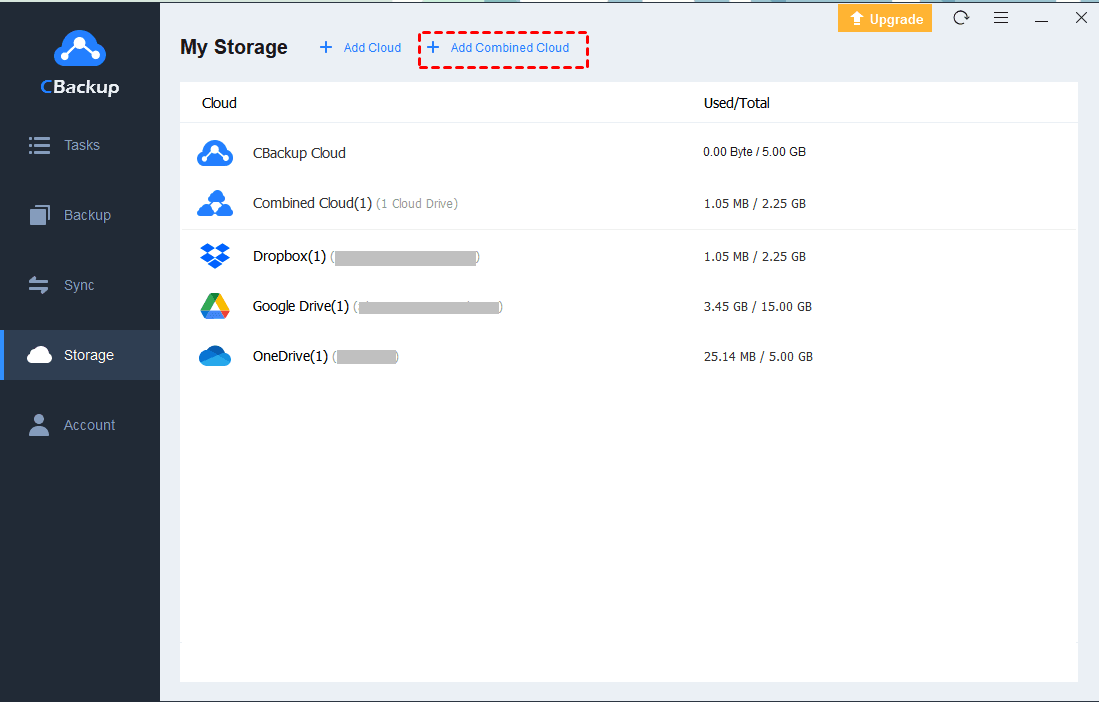How to Backup PST Files Automatically for Data Security
Wanna learn how to backup PST files? This tutorial will show you the methods to backup PST files automatically or manually, and introduce a tool called CBackup to help you backup files and data more conveniently.
Some basic information about PST files
Do you know? PST is actually an abbreviation for Personal Storage Table. In this article, you can get a basic overview of it and how to backup PST files in Outlook. If you are interested, please read on.
1. What is PST Files?
PST files are personal folder files in Microsoft Outlook. Outlook personal folders and archive items will be located in files with the extension .pst, and your information will be stored on your computer's local hard drive. In Outlook, the storage limit of a single user's PST file is 2 GB. This feature allows you to access previously downloaded or synchronized emails, calendar information, contacts, and tasks without a network connection.
Because the data stored in the PST file contains a lot of important information, it is important to backup the PST file in Outlook.
2. Where are PST files saved?
The fastest way to open the folder where Outlook PST files are saved is to do the following:
Step 1. In Outlook, click File.
Step 2. Click Account Settings on the right pane, then click Account Settings as shown in the picture.
Step 3. On the Data Files tab, click an entry, then click Open Folder Location.
By default, the PST file is located at:
Windows 10 (one of the following location):
- drive:\Users\yourusername\AppData\Local\Microsoft\Outlook
- drive:\Users\yourusername\Roaming\Local\Microsoft\Outlook
Windows 7 or Vista: C:\Users\AppData\Local\MicrosoftOutlook\
Windows XP: C:\Documents and Settings\Local Settings\Application Data\Microsoft\Outlook\
The more Outlook data files (.pst), the more chances are that your OneDrive stuck on processing changes, or you could remove .pst files from OneDrive to speed up the sync.
Why do we need to backup Outlook PST files?
PST file is a common information storage format. Whether you download email from Gmail to Outlook or sync Google Calendar with Outlook Calendar, everything will be saved in the PST file on your computer.
In any Microsoft-based environment, protecting and managing PST files is critical. To prevent losing any data when the computer crashes, you need to back up your PST files.
How to backup PST files automatically
To automatically backup PST file depends on third-party services, you can use the following software to back up your Outlook.
☛Safe PST Backup: A program that can perform PST and OST file backup, mail archiving, or data migration projects. It can make an incremental automatic backup of data in Outlook.
☛OutlookBackupAddin: This is a tool that can help you automatically backup PST files. It can configure the backup frequency, target directory, and PST / OST to be backed up. You can also add a prefix or suffix to the file name.
These are several widely used tools for automatically backing up Outlook. You can choose one to use according to your needs. Of course, if you do not want to use third-party tools, the following will continue to introduce you to manually backup files of PST. Although this method is a little more complicated, you do not need to download additional tools.
Manual way to backup Outlook PST files
If you don’t want to use a third-party program, there is a way to manually backup.
Step 1. Quit Microsoft Outlook (Unable to backup Outlook .pst file when opening Outlook).
Step 2. Press and hold the Windows key on the keyboard, then press the "E" key to open Windows File Explorer.
Step 3. Enter * .pst in the search box so that you can search all files with the extension .pst in "Windows (C:)".
Step 4. Then press the "Enter" key. The results should show all Outlook PST files, including all files in the hidden C:\Users\...\AppData\Local\Microsoft\Outlook folder.
Step 5. Open Windows File Explorer, then drag the window to the left side of the screen, then let go of it so that it snaps half of the screen. Right-click the File Explorer icon, and then click File Explorer.
Step 6. Align the second window to the left so that it appears on the second half of the screen like the previous window.
Step 7. Navigate to your external device in one window, and then navigate to the location where you want to store the file in another window. Then use the drag-and-drop method to back up all required files.
Bonus tip: Use cloud drives to backup PST file
Cloud storage and cloud backup service are now very popular in business and daily life, and its emergence provides safe and convenient services for our backup work. Many cloud drives now support backing up the files on the local hard drive to the cloud. We can also use the cloud drive to back up our PST files, so that we can protect our data without taking up space on the computer.
In addition to PST files, Windows computers also store many important files such as photos, documents, application data, etc. To avoid the loss of important data and cause irreparable losses, you need to back up your computer.
The free cloud backup service, CBackup, provides app to support Windows PC auto backup of files to the cloud. It provides professional backup methods (full backup and incremental backup) and unlimited backup speed. More importantly, CBackup offers 10 GB free cloud storage of CBackup Cloud, and an account supports unlimited devices. You can download it to backup PST files.
Step 1. Install CBackup on your computer, sign up for it and log in.
Step 2. If you need backup PST files to Public Cloud with CBackup, please click the Storage tab, then pick your cloud drive button and hit Authorize Now. Then follow the instructions on the screen to connect CBackup with your cloud drive account.
Step 3. Click on the Backup button and tap the Backup PC to Public Cloud position.
Step 4. Choose the PST files or any other PC files, and choose the cloud drive as the target. Finally tap “Start Backup” to backup PST files to cloud.
To get PC auto cloud backup, click on the Settings position to enable scheduled backup before you start the backup task. Then, you can choose the fittest backup modes according to your needs, such as One time only\Daily\Weekly\Monthly.
More About CBackup
The most common cloud storage on the Internet that can back up local data includes Google Drive, OneDrive, Dropbox, etc. These services will have a certain free storage space after you register (these services are 15GB, 5GB, 2GB). When your data volume is relatively large, you can choose to upgrade your cloud drive or register multiple cloud storage account to backup more files.
To use multiple cloud drives, it is highly recommended that you to try CBackup, which allows you to add multiple cloud drives so that you do not need to log in to different platforms to perform different backup tasks. Once you log in to CBackup, you can get it done. These small pieces of cloud services can be combined into a complete large space on CBackup by merging multiple cloud storage for free, making full use of free cloud disk resources, so that you can perform backups without restrictions.
Moreover, you could probably to transfer files from one cloud to another with cloud to cloud sync feature if you are using multiple cloud drives. Backup one cloud data to another for data security and restore data quickly if the data get lost.
Epilogue
By reading this article, you may already know everything you need to know, including what is PST files, PST locations, and how to backup PST files even in Outlook 2010. You can choose one of them according to your needs.
If you are using multiple cloud drive services, you can try to use CBackup to help you perform backup tasks for different cloud services on one platform.
Free Cloud Backup & Sync Service
Transfer files between cloud drives, combine cloud storage to gain free unlimited space
Secure & Free













